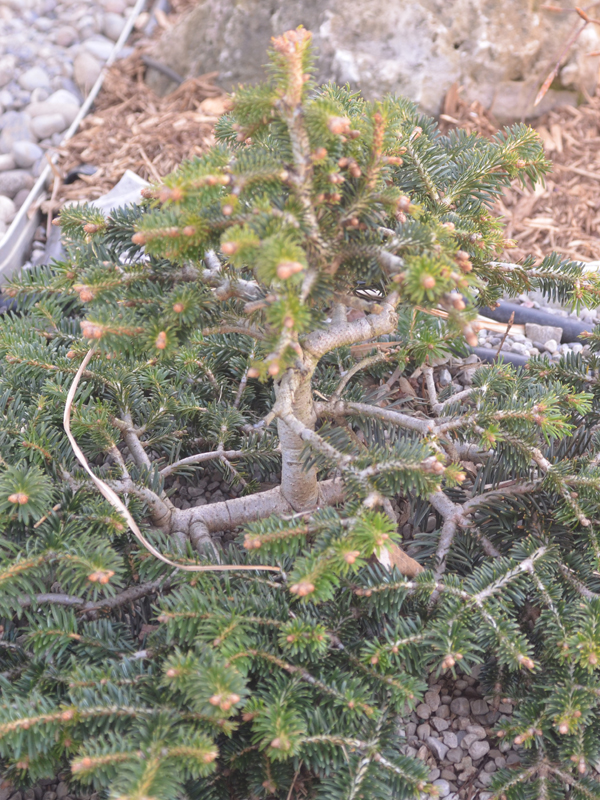
Woody > Abies > Abies bornmuelleriana > Abies bornmuelleriana
Abies bornmuelleriana
Bithynian Fir, Turkish Fir, Uludag Fir, Black Sea Fir
Origin: Turkey, ranging through the northwestern portion of Anatolia in the Uludag Mountains.
Mike's
Opinion


"
A tree similar in character to A. nordmanniana with branches skirting the base of the trunk touching the ground.
Michael Pascoe, NDP., ODH., CLT., MSc. (Plant Conservation)
"
| Family |
| Pinaceae |
| Genus |
| Abies |
| Species |
| bornmuelleriana |
| Category |
| Woody |
| Type |
| Tree (evergreen) |
| Synonyms |
| Abies nordmanniana subsp. bornmuelleriana, Abies bornmuelleriana subsp. equitrojani, Abies equitrojani |
| USDA Hardiness Zone |
| 4 |
| Canadian Hardiness Zone |
| 2 - 5a |
| RHS Hardiness Zone |
| H7 |
| Temperature (°C) |
| -35 to -29 |
| Temperature (°F) |
| -30 to -20 |
| Height |
| 55 m |
Photographs
Description and Growing Information
Flowering Period
| Cultivation |
| Responds well to shearing and hence its use and potential as a Christmas tree. It tolerates dry soils but is intolerant of heavy soils, plant in full sun. |
| Shape |
| Broadly pyramidal. |
| Growth |
| Medium |
| Pests |
| It is a species that is reported to be resistant to Phytophthora root rot however seedlings are susceptible to Phytopthora cactorum. Deer tend to be attracted to its foliage. Armillaria mellea, Armillaria gallica, Dioryctria abietara, Fusarium sp., Formes annosus, Heterobasidion annosum, Polyporus fulvus, Trametes radiciperda and Trichosphaeria parasitica are all potential fungal pathogens. |
| Habitat |
| Humid bio-climates, in mixed stands at elevations up to 2,500 m, on granite in the Uludag Mountains. |
| Flower/Leaf Bud Description |
| The buds are resinous and generally break in mid-May in its native range. |
| Leaf Description |
| Glabrous branchlets with dark, rich green needles adaxil but being bright silver abaxil. |
| Flower Description |
| The tree is monoecious and wind pollinated. |
| Fruit Description |
| The cones ripen in one year with a heavy seed crop produced every 3 - 5 years, they are up to 15 cm long and are dull grey in colour turning to light brown when mature. |
| Ethnobotanical Uses (Disclaimer) |
| May be used in Christmas tree production. A fine grade of turpentine may be produced from the bark, buds and cones while a coarse resin called colophony is used in the pharmaceutical industry. The wood is quite weak and finds little use in construction however it used as poles and firewood. |
